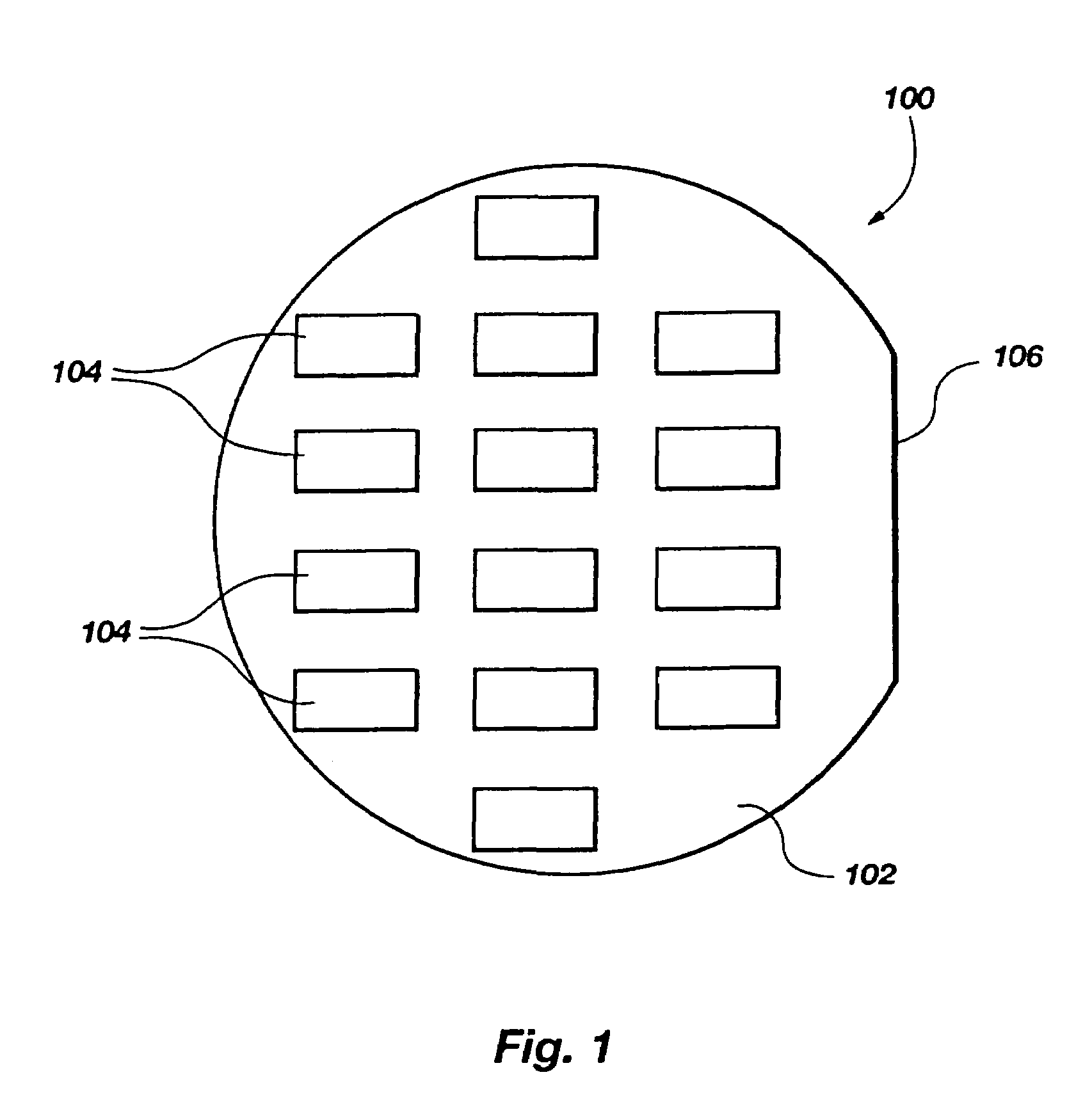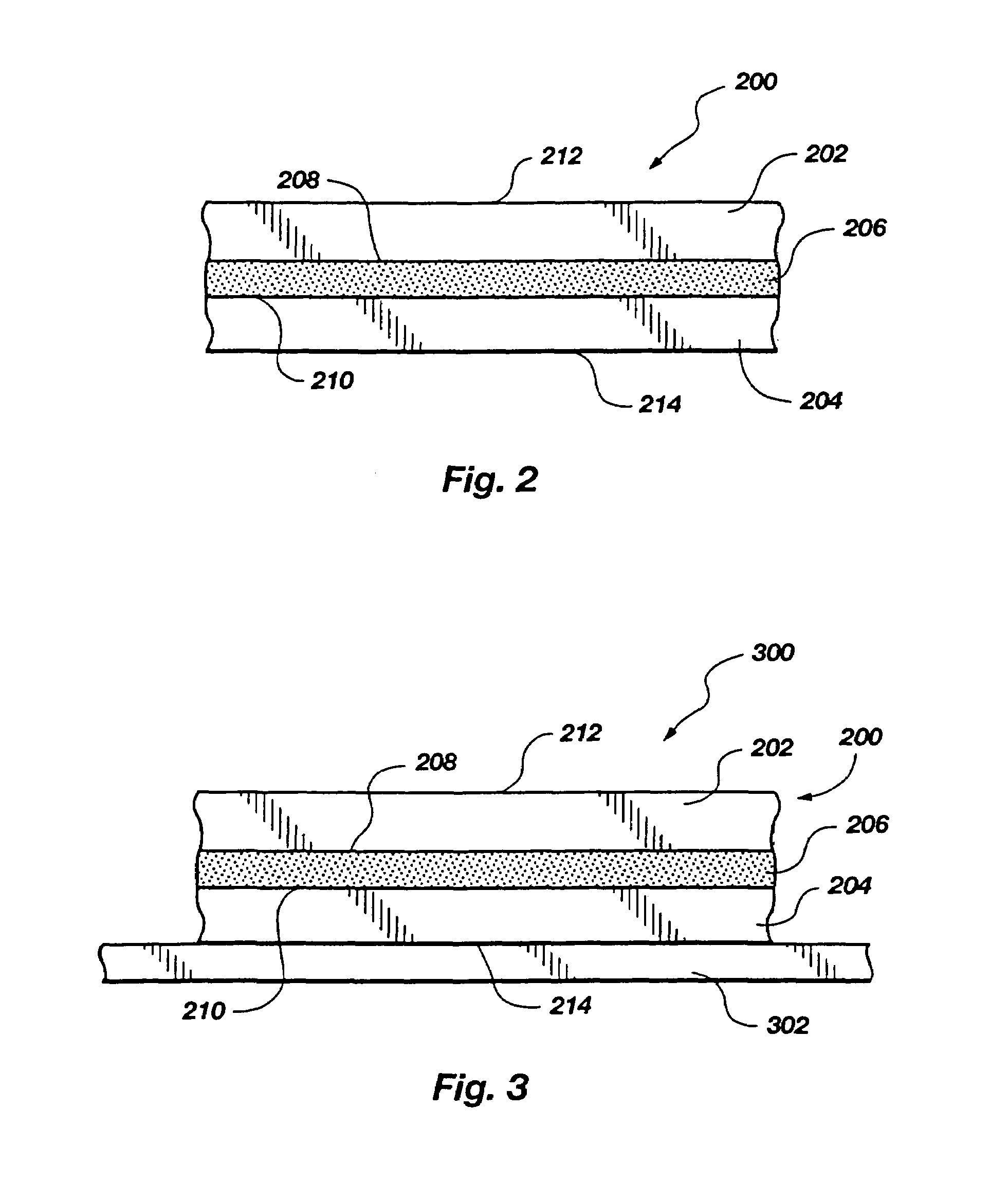Method of fabrication of stacked semiconductor devices
a technology of semiconductor devices and fabrication methods, applied in semiconductor devices, semiconductor/solid-state device details, electrical apparatus, etc., can solve the problems of economic undesirable effects of proceeding at less than wafer level, and achieve the effect of increasing the density of semiconductor devices
- Summary
- Abstract
- Description
- Claims
- Application Information
AI Technical Summary
Benefits of technology
Problems solved by technology
Method used
Image
Examples
Embodiment Construction
[0048]FIG. 1 illustrates a top plan view of an exemplary completed wafer 100 of the present invention. The wafer 100 comprises an upper surface 102 displaying the active sides of a plurality of dice 104. The dice 104 each contain identical integrated circuitry, which will be independently functional after the dice 104 are separated from the wafer 100. While in practice, the dice 104 are extremely closely packed on the wafer 100 and essentially contiguous, but for the wafer material sacrificed during sawing, the dice 104 have been shown as more widely spaced for clarity in disclosure of the method of the invention. The wafer 100 also includes a flat lateral edge 106, as known in the art. The method of the present invention comprises fabricating appropriate circuitry in the upper wafer surface 102 at the locations of the dice 104 by techniques well known in the industry.
[0049]As shown in FIG. 2, a wafer pair assembly 200 comprises completed wafers 202 (upper wafer) and 204 (lower wafe...
PUM
 Login to View More
Login to View More Abstract
Description
Claims
Application Information
 Login to View More
Login to View More - R&D
- Intellectual Property
- Life Sciences
- Materials
- Tech Scout
- Unparalleled Data Quality
- Higher Quality Content
- 60% Fewer Hallucinations
Browse by: Latest US Patents, China's latest patents, Technical Efficacy Thesaurus, Application Domain, Technology Topic, Popular Technical Reports.
© 2025 PatSnap. All rights reserved.Legal|Privacy policy|Modern Slavery Act Transparency Statement|Sitemap|About US| Contact US: help@patsnap.com



